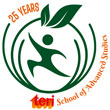
ANNOUNCEMENTS

Speaker: Dr. Dipa Sinha, Assistant Professor, School of Liberal Studies, Ambedkar University Delhi
In explaining differences in human development across Indian states, women's status matters, not just through women's role within the household but also as a collective voice in society. There are multiple pathways through which women's status affects health and human development outcomes. Female education is a crucial factor. Educated and economically independent women have a greater say in household decision making and better bargaining power within the household. Further, better women's status also has a 'social' role. At the societal level, higher female workforce participation for example, provides women better control over social resources and freedom in social interaction. On the other hand, at the individual level while women's involvement in paid work increases the economic worth of the female members within the household, resulting in their having a greater bargaining power, there is also a negative effect of child care suffering when women work due to absence of adequate alternatives for child care.
This paper interrogates these issues from the lens of a longitudinal village survey in Palanpur, Uttar Pradesh. Village surveys have been carried out in Palanpur in western Uttar Pradesh since the 1950s. Seven rounds of panel data are now available spanning from 1956 to 2015. One of the key features in Palanpur's story is that the substantial progress observed in terms of income has not been accompanied by equivalent changes in gender relations. To a large extent women continue to be confined to household-related work with only a few participating in cultivation activities on their own farms. Even fewer women participate in paid wage labour. At the same time, there is a striking rise in female education status, albeit from very low levels, especially in the last twenty years. This paper looks at these various aspects of women's status in the village, including women's education and employment, mobility, health and participation in public life. Some comparisons are also made with the situation in the state of Uttar Pradesh as well as other states in India.
This paper also attempts to contribute to the understanding of factors affecting women's workforce participation. While the overall participation of women in the workforce has always been very low, there is a recent trend of a larger number of women reporting as primary workers - mostly in cultivation. This period also coincides with increasing participation of men in non-farm employments. It is mostly women in households where men have moved out of agriculture who now report as being 'workers'. However, the response varies greatly across households. Trends related to women's workforce participation vis-a-vis women's education, norms related to mobility, caste, etc. are discussed.
Plot No. 10, Institutional Area, Vasant Kunj, New Delhi - 110 070, India.
Tel. +91 11 71800222 (25 lines).
Website : www.terisas.ac.in
Email id : registrar@terisas.ac.in
© Copyright © 2025, TERI SAS, All rights reserved.
Visitors No.: 48061715 Since 2023


